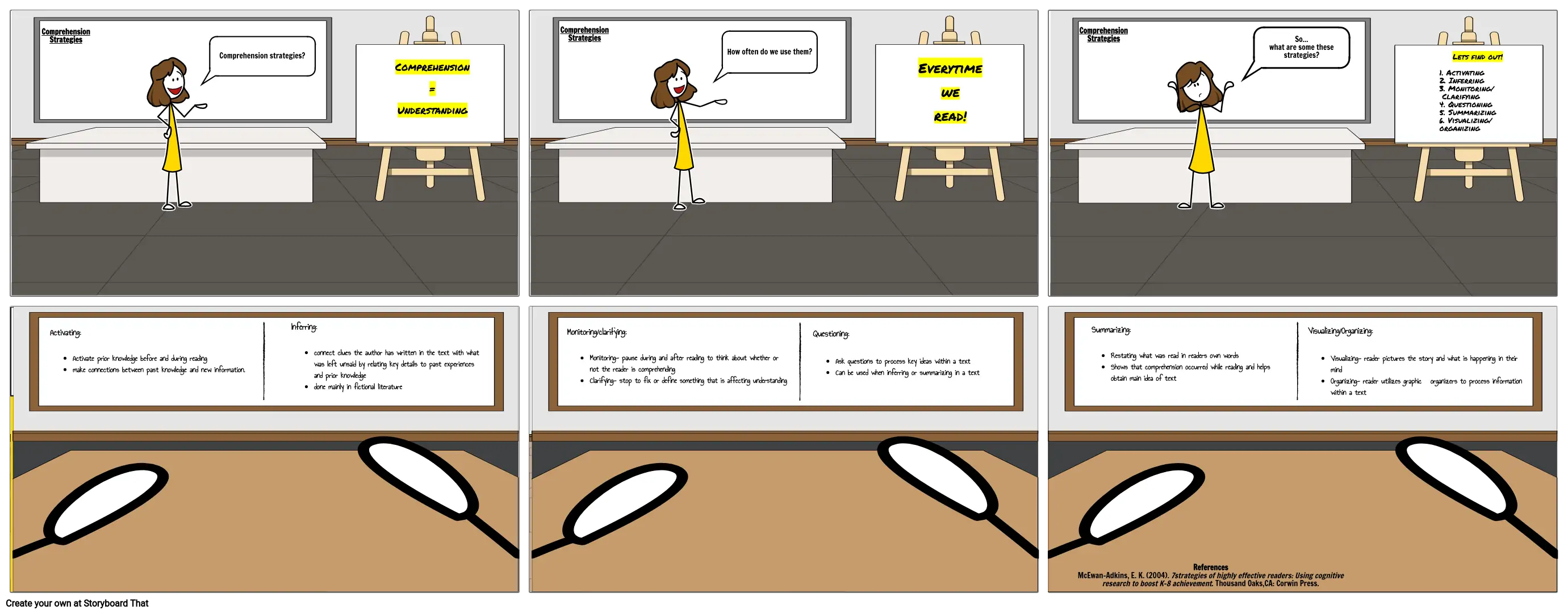Reading Comprehension

Storyboard Text
- ComprehensionStrategies
- Activating: Activate prior knowledge before and during readingmake connections between past knowledge and new information.
- Comprehension strategies?
- Inferring:connect clues the author has written in the text with what was left unsaid by relating key details to past experiences and prior knowledgedone mainly in fictional literature
- Comprehension= Understanding
- ComprehensionStrategies
- Monitoring/clarifying: Monitoring- pause during and after reading to think about whether or not the reader is comprehendingClarifying- stop to fix or define something that is affecting understanding
- How often do we use them?
- Questioning:Ask questions to process key ideas within a textCan be used when inferring or summarizing in a text
- Everytime we read!
- ComprehensionStrategies
- Summarizing: Restating what was read in readers own wordsShows that comprehension occurred while reading and helps obtain main idea of text
- So... what are some these strategies?
- Visualizing/Organizing:Visualizing- reader pictures the story and what is happening in their mindOrganizing- reader utilizes graphic organizers to process information within a text
- Lets find out!1. Activating2. Inferring3. Monitoring/ Clarifying4. Questioning5. Summarizing6. Visualizing/ organizing
- ReferencesMcEwan-Adkins, E. K. (2004). 7strategies of highly effective readers: Using cognitive research to boost K-8 achievement. Thousand Oaks,CA: Corwin Press.
Over 30 Million Storyboards Created
No Downloads, No Credit Card, and No Login Needed to Try!
